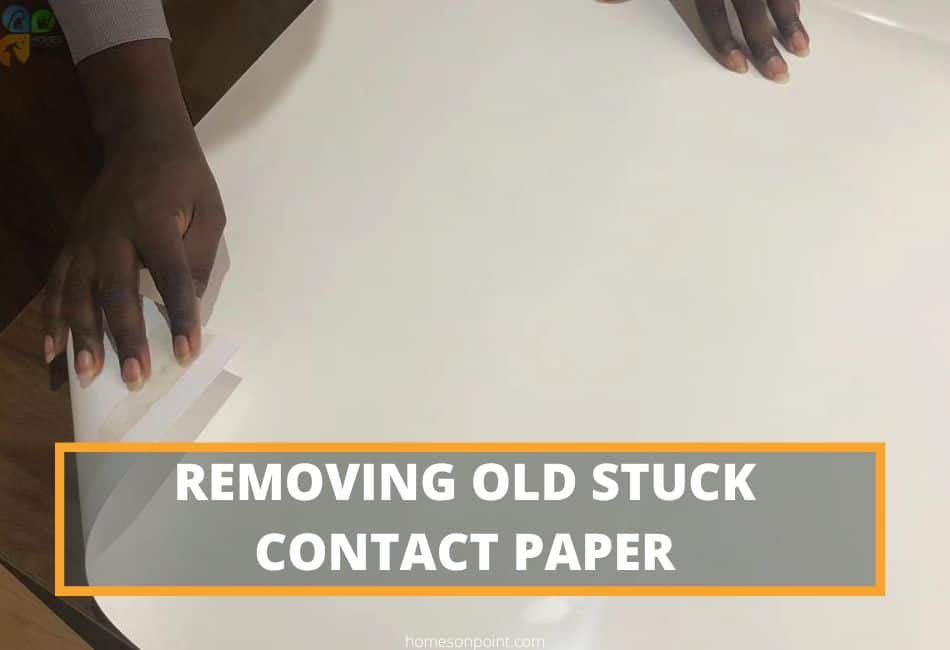When we moved into our current home, we didn’t like the color of our kitchen cabinet. It was a dark brown color that dulled the whole kitchen. We wanted to brighten up the cabinet but we didn’t want to replace the whole cabinet. One option that came up was to put contact paper on the cabinet. We liked the idea because it was an easy and inexpensive way to change the look of our kitchen. We also had a lot of interesting designs to choose from.
3 years down the line, we wanted to change the contact paper but it turned out to be not as easy as we thought when we tried to remove it right away. The contact paper was stuck on really well. So how did we remove it?
Heat was applied to the contact paper using a hairdryer. The heat loosened the adhesive on the contact paper and made it easier to remove.
Contact paper is preferred by many people because it presents a wide variety of unique designs at affordable prices. If you are not satisfied with the design of your kitchen furniture or you are simply bored of its current appearance, you can easily change to a more preferrable design with contact paper. You can literally finish applying contact paper in an hour depending on the size of the furniture.
When it gets to the time to replace the contact paper, it can sometimes prove stubborn to come off. If you are having a hard time removing contact paper from your kitchen cabinet, read on for a step-by-step guide on how to get it done in the shortest time possible.
What Makes Contact Paper Stick So Hard On Kitchen Cabinets
The whole purpose of contact paper is to stick on surfaces. The paper is coated with an adhesive that helps it to achieve its purpose. Once the contact paper sticks on a surface, it will not slip off by any means.
But sometimes, it sticks very hard to the point that you might think that it is impossible to remove it without damaging your kitchen cabinet. Here are a few reasons why:
1. Contact paper quality
The quality of contact paper has a lot to do with how well it sticks on surfaces. If you buy cheap contact paper, it is likely to have a low-quality adhesive that does not stick well. On the other hand, if you buy a high-quality contact paper, it will have a strong adhesive that can stick well on surfaces. The focus here is more on how strong the adhesive is rather than the contact paper itself
2. Heat
When contact paper is exposed to some level of heat, the adhesive becomes stronger. It is advised not to expose contact papers to direct heat such as putting hot pans or pots on them because contact paper is not completely heat resistant. But when the contact paper is exposed so some level of heat that is not high enough to damage the contact paper, it can actually make the adhesive stronger.
Different adhesives react differently to varying levels of heat and some contact papers are heat activated to make them stick even better. If you have such contact paper, it is likely to become very difficult to remove when exposed to heat
3. Long usage
The longer you use contact paper, the harder it becomes to remove. This is because the adhesive has had enough time to bond with the surface. The contact paper becomes a part of the surface.
How To Remove Old Contact Paper From Kitchen Cabinets In 4 Easy Steps
If you’ve made it to this point, then I guess you tried removing the contact paper by pulling it off and it didn’t work. Don’t worry, there’s an easy way to do it.
Here’s what you’ll need:
- Hair dryer or heat gun
- Adhesive remover
- Cloth
- Polished putty knife
Procedure:
Step 1
Set the hair dryer or heat gun to the lowest heat setting and hold it about 4 inches away from the contact paper. Apply heat to the contact paper for about 1 to 2 minutes. This should loosen the adhesive on the contact paper for easy removal.
Do not take the heat source too close to the contact paper especially when you are using a heat gun. You don’t want to burn the contact paper.
Step 2
Use your fingers or a putty knife to lift a corner of the contact paper and peel it back slowly. If the contact paper is still stuck, apply more heat to that section. Be gentle when pulling the contact paper away from the cabinet because the contact paper is old and might start breaking if you pull too hard.
Because of the heat application, the contact paper can become hot so be careful when you are using your fingers to pull the contact paper.
Step 3
If the contact paper continues to flap back down to the kitchen cabinet, use a sheet of paper as a barrier between the contact paper’s adhesive and the surface of the kitchen cabinet. Then, continue to remove the remaining contact paper.
Step 4
After completely removing the contact paper, the area on the kitchen cabinet will be tacky from glue residue from the paper. Use an adhesive remover to remove the glue residue.
Spray the adhesive remover onto the tacky surface and let it sit for about five minutes. Use a polished putty knife to scrape off the glue residue until it comes off completely and use a soft cloth to polish the area, making sure all residue is removed.
Conclusion
Removing old stuck contact paper from the kitchen cabinet is not a difficult thing to do. All you need is a heat application and you are good to go. Be careful with the heat application and use an adhesive remover to remove any glue residue. With these four easy steps, you can successfully remove contact paper from your kitchen cabinets no matter how hard it seems to be stuck. Have a lovely day.
FAQs
Q: Does vinegar remove adhesive residue from contact paper?
A: Yes, vinegar can be used as an alternative to an adhesive remover. Soak a cloth in vinegar and place it over the tacky surface. Let it sit for about 15 minutes before scraping off the residue.
Q: How do you remove contact paper without damaging the paint?
A: Use a hair dryer or heat gun to heat up the contact paper for about 2 minutes. This will loosen the adhesive contact paper and you can pull it right off without damaging the paint.
Q: How do you remove old brittle contact paper?
A: Old brittle contact paper can be difficult to remove because they break easily. The easiest way is to heat up the contact paper with a hair dryer. The longer the heat is applied, the easier it will be to remove it. Then using a putty knife or your fingers start from the corner and begin pulling it off gently until all of them come off.
Q: Does contact paper comes off easily?
A: This depends on factors such as the quality of the contact paper, how old the contact paper is, and what type of adhesive was used. But generally, quality and not too old contact papers shouldn’t be difficult to remove.

